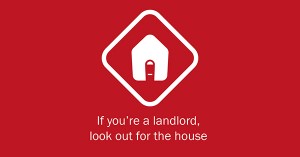The lending surge: is it all bad news for landlords?
We reported recently on the changes in stamp duty having an impact on property purchases and previously advised landlords thinking of increasing their portfolio in 2016 to buy in the first quarter in order to beat the rise. So, it’s no surprise that we saw a big jump in mortgage lending in March as landlords rushed to beat the hefty 3% hike in stamp duty being applied on purchases of homes that are not the owner’s main residence in a bid by the Treasury to slow the surging buy to let market.
According to the Council of Mortgage Lenders (CML), gross mortgage lending in March hit £25.7bn – that’s 59% more than the same month last year, and up 43% from February, so a real last minute rush to get purchases over the line. HM Revenue and Customs also reported the surge, with 161,990 properties sold in the UK last month, which is the highest number since June 2006.
CML economist Mohammad Jamei said: “The distortion caused by this stamp duty change appears to be larger than any previous stamp duty change we have seen.”
He doesn’t think that this upward surge is likely to continue, though, and expects sales to drop off now that the extra tax has come in, with around 10,000 fewer transactions each month in the second quarter than would otherwise have been the case.
So, with the dust now settling after the rush, what does this really mean for landlords? Have the Treasury achieved their goal of slowing the buy to let market and creating more affordable houses for first time buyers and those taking a step up the property ladder? We’ve taken a closer look at the figures, and it doesn’t seem like it’s all bad news for landlords.
Although asking prices rose 1.3% for properties in England and Wales coming onto the market in March when compared with February, and this was definitely a knock on effect of buy to let landlords making purchases in the lower end of the market, it’s not as clear cut as it seems, as the bulk of the increase was actually in the middle to top end of the market. Outside London, the average asking price for the smaller properties that landlords would typically be looking to buy actually fell by 1.4% to £182,926.
So, for landlords still looking to invest this year, it seems that there may still be bargains to be had, especially with a Brexit decision on the horizon driving a bit of caution. You’ll need to budget carefully and make sure you take account of the 3% surcharge when planning your purchase and forecasting your rents, but we think that, even with the stamp duty increase factored in, a savvy acquisition or two to add to your portfolio could well provide some decent rental yields in the months ahead.
What are your plans for the rest of 2016? Were you part of the surge in March? Tweet us @legal4landlords and let us know! And if you’ve got a new property in your portfolio, or were spurred on to dip your toe in to the buy to let market by the impending surcharge and need some help with setting up tenancy agreements or any other legal aspects of the landlord world, get in touch on 0333 577 9050 and one of the team will be happy to help.






























